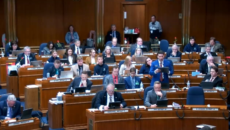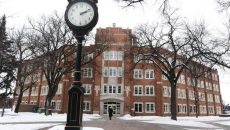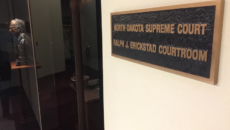Guest Post: North Dakota's Overbuilt Hotel Industry A Separate Conversation From Permanent Housing

Recently, I read an article on SayAnythingBlog.com that was full of consternation over whether North Dakota is inflating its own “housing bubble” via the Housing Incentive Fund (HIF). The article cited a story about the number of hotels in Minot and worried that supply for all types of housing would soon outstrip demand.
North Dakota Housing Finance Agency (NDHFA), as are all of our housing partners, is concerned about overbuilding housing. An overbuild in our communities goes against conservative North Dakota nature and there is no interest in exacerbating the challenges our communities face. However, keeping an eye on when will we achieve enough housing one needs to look a lot deeper than just counting hotel beds. What this train of thought does not take into account is the status of permanent workforce versus temporary and the appropriate housing to accommodate both, as well as housing issues in the rest of the state.
In my last article, I wrote about a Statewide Housing Needs Assessment projecting new household growth and the fact that the average annual new housing units permitted were only 77 percent of the Assessment’s annual projection of 7,838. The Assessment also projected that 46 percent or 3,647 of these new households annually will be considered low-income households. However, during the past three years, the average annual new affordable housing units approved under affordable housing programs including HIF stands at 517 or only 15 percent of projections.
These projections cover the entire state and the new households will be populated by permanent residents in our state. They will require traditional housing structures like single-family homes and apartments that are affordable, not extended stay hotel or crew camp facilities. The question today should be who are we striving to house and what type of housing will they need and want?
Let’s take a closer look at what is driving the Assessment numbers. First, western North Dakota. According to the North Dakota Department of Mineral Resources (DMR) and the oil industry each new oil well drilled in North Dakota translates to the need for one permanent full-time employee to operate and maintain it during its production years. DMR estimates that an additional 30,000 to 35,000 wells are still to be drilled – that is an additional 30,000 to 35,000 more permanent jobs that will be created in the oil industry alone. This tells me that in oil country we will begin to see a transition from temporary, transient workers to a more permanent workforce who will be seeking a permanent housing situation along with a depopulation of the roughly 25,000 crew camp beds and an unknown number of extended stay facility beds.
Economists, modeling the impact of the oil industry in western North Dakota, say that for every permanent oil industry employee another 2.5 jobs will be required to support them in the communities where they choose to live. That adds another 75,000 to 87,500 new workers to our challenge. These workers will be employed on main street and provide essential services in those communities like law enforcement, emergency responders, road maintenance workers, teachers and medical support staff. These workers will also be seeking a traditional type of permanent housing structure.
What about the rest of North Dakota? Non-oil impacted communities are not only experiencing their own economic expansion, but are also seeing their current stock of affordable housing being consumed by those leaving the oil patch, as well as new residents moving there seeking employment opportunities. Here is just some of what we know today.
* Grand Forks Blue Ribbon Housing Commission study indicates that there are 2,700 families in the community earning less than $25,000 that are currently underserved.
* A Minot post-Assessment survey shows that more the 11,900 residents are considered housing cost burdened. In addition, there remains 250 FEMA trailer households who are considered low income and currently do not have a permanent housing solution.
* The Lashkowitz High Rise in Fargo, which houses 248 elderly and disabled residents, is in critical need of major renovation and after utilizing traditional affordable housing programs there remains a funding gap of $5 to $7 million.
* A study commissioned by the South Central Dakota Regional Council indicates the region needs more than 2,600 housing units within the next five years to meet the demands of present manufacturers and projected traditional business growth.
* The state’s elderly population continues to rise as the Baby Boom generation ages. Projections show a 60 percent increase in the number of North Dakotans over the age of 65 from 2010 to 2025 and corresponding need for alternative housing that is appropriate and affordable.
There are those who subscribe to the supply and demand doctrine and believe that eventually private development will catch up with the need and prices will begin to moderate. While I concur with this theory during normal situations, today we are experiencing unprecedented times. There are two important questions that we must ask ourselves: When will we reach the tipping point when prices begin to moderate? And more importantly, what do we do with our low- and moderate-income citizens in the mean time?
Yes, at some point in time our demand/need for housing development will reach more normal levels, housing costs will begin coming down and there will be less need for public incentivized housing development. But not today. And, yes a reassessment of our housing situation prior to the next time legislators meet is certainly appropriate.
However, the need for affordable housing in North Dakota and, accordingly, an aggressive state housing policy remains undaunted in my mind. That policy should not be set based on the status of facilities intended to temporarily house transient workers and the traveling public. Whether there is an overbuilt hotel industry in the state is an entirely separate conversation.







